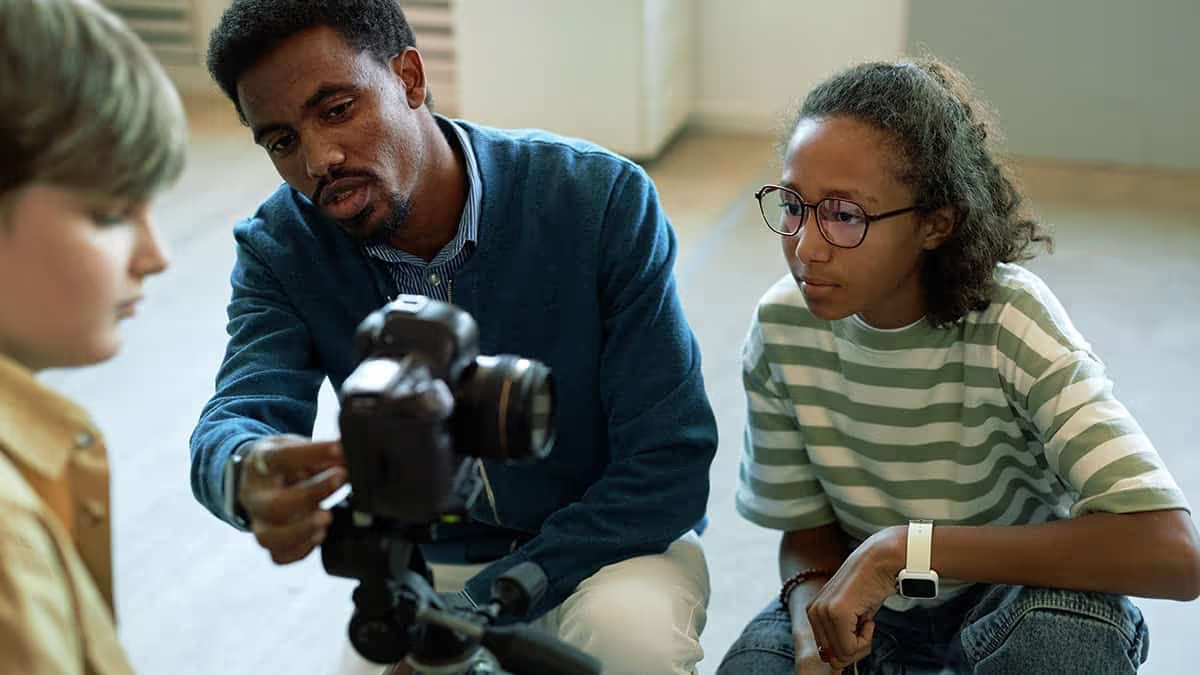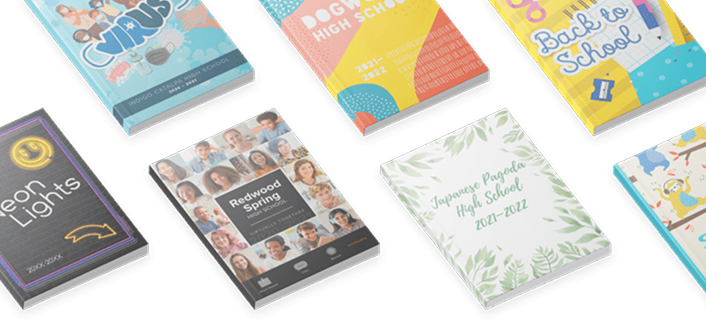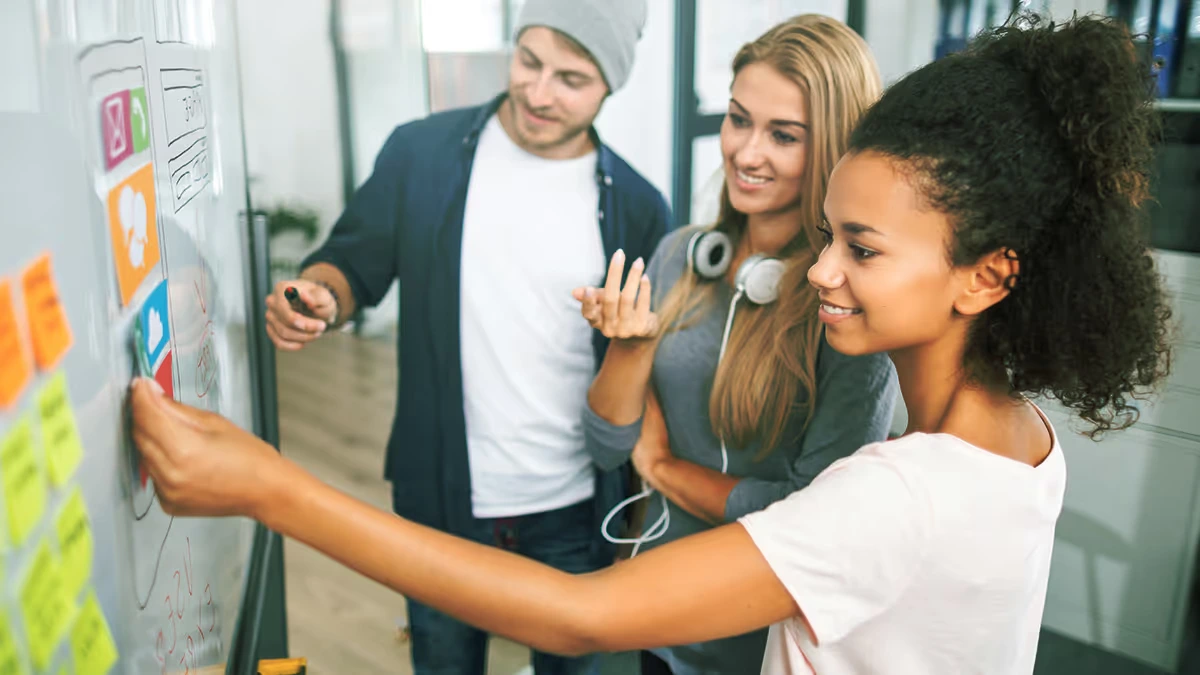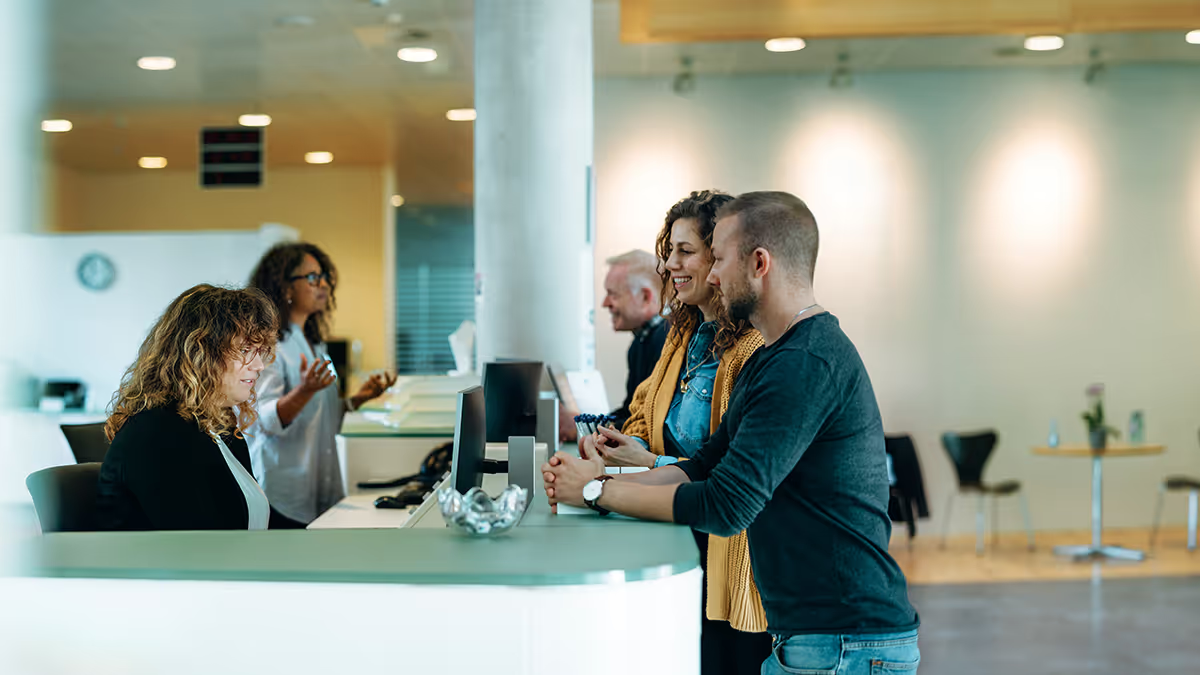Most popular
Subscribe to our blog
Most recent

10 yearbook committee positions that can solve your biggest yearbook challenges
Here are the yearbook challenges you can solve just by filling these yearbook committee positions:
The challenge: Your yearbook committee has a lot of volunteers … but not a lot of direction. The solution: Editor-in-Chief. Newspapers. Magazines. Media websites. All large publications have an Editor-in-Chief position – and for good reason. An Editor-in-Chief is charged with overseeing the entire publication. It’s his or her responsibility to bring together all the pieces that make your yearbook great. Things like coordinating with the yearbook production company, the portrait studios, various school departments and student organizations, plus keeping the publication on time and on budget. The role requires organization, perseverance … and more than a little patience. Having an Editor-in-Chief on your yearbook committee gives you one point of contact for all questions and issues, which will help simplify the process and keep everyone on task. The challenge: You have an Editor-in-Chief, but he/she is completely overwhelmed. The solution: Assistant Editor. The Editor-in-Chief position can quickly become overwhelming (and undesirable) if there’s no support surrounding it. That’s where an Assistant Editor comes in. The Assistant Editor can help the Editor-in-Chief by taking on important tasks related to the publication itself, such as making sure the yearbook has a consistent look and feel throughout, and that it reflects your school’s unique spirit. By giving your Editor-in-Chief a person to lean on throughout the process, you will improve the ways the entire yearbook committee functions. The challenge: You want your yearbook to capture each important moment of the school year, but there are so many events and activities to cover. The solutions: Photographer(s) + Journalist(s). While it will be impossible to attend every game, competition, match or meeting in a school year, having dedicated Photographers and Journalists on your yearbook committee can help you cover your bases (literally!). Photographers should, of course, have skills and interest in photography. But they must also be willing to attend a variety of events to take candid photos. The same applies to Journalists. These committee members should be comfortable interviewing students, parents and staff, and they should plan on attending multiple school events. To keep your Photographers and Journalists on task, create a schedule of your school’s bigger events and assign committee members to cover each one. Struggling to recruit people who will be available for these roles year-round? You can always crowd-source photographs and stories from attendees who don't have set yearbook committee positions: if you know someone reliable who is attending an event, ask them to be your photographer or journalist for the day. The challenge: Your budget is tight, and your school administration/PTA could use a few extra bucks for activities. The solution: Ad Salespeople. Selling advertising is a standard (but important) part of creating your school yearbook. Yet when ad sales are everyone’s job, the actual selling can feel like no one’s job. Make yearbook committee members accountable for this task by giving them the role of Ad Salesperson. Ad Salespeople will be responsible for selling ads to parents, local businesses and community members. They can help answer any questions the advertisers may have, and help with ad layout in the final yearbook. The challenge: Your yearbook content comes from a variety of school sources, and there is no consistent style. The solution: Copy Editor. Getting a bunch of people to find and tell stories from a bunch of different school departments and organizations is awesome -- but it might make your yearbook content feel disconnected. A strong Copy Editor can fix that. The Copy Editor role not only requires keen grammar, spelling and punctuation skills, but also creative storytelling abilities. Choose someone who enjoys writing and who understands your school community and the stories that are important to tell. The challenge: You’re struggling to pull your yearbook content together into a final, professional format. The solutions: Layout Editor + Graphic Designers. The visual consistency of your yearbook is just as important as the consistency of the words on the page. Compiling an entire year of events and activities takes time – and design skills. And a Layout Editor and Graphic Designers can make the process much more efficient. The Layout Editor will take all of your yearbook material and do what the name implies – lay it out into a design that flows from one page to the next. The Layout Editor can also handle any graphic design elements, or you can have other committee members help in this area. (Learn more about yearbook design, layout and style in our free guide: “The Definitive Guide to Yearbook Design.”) The challenge: Your yearbook is over budget … wait, is it? You’re not sure, since there are so many expenses and sales to monitor. The solution: Treasurer. While the Editor-in-Chief has some responsibility over the budget, a Treasurer can help keep track of daily costs and income. The Treasurer will monitor sales, advertisements and any other costs associated with yearbook creation. This way, you will always have an answer when someone inevitably asks, “Are we on budget?” The challenge: Your yearbook is done! Hooray! Now you just need people to buy it … The solution: Marketers. Yearbook creation is often so all-consuming that it’s easy to forget about a critical piece that must happen during production: marketing. Marketers are one of your most important yearbook committee positions. They help spread the word about your yearbook while it’s being created, and promote it once it’s finalized. This can be by creating promotional materials like flyers and emails, or through fun and creative guerrilla marketing tactics. It’s the marketers’ job to get everyone excited about the amazing publication you just devoted your time, resources and heart into creating. If you stick to these yearbook committee positions, recruit like heck, and use a yearbook staff application or yearbook committee sign-up form, you'll end up with a well-rounded, highly motivated team that's ready to tackle any challenge that's thrown your way.
Three yearbook planning steps yearbook advisers should take
Capturing the spirit of a school year within the pages of the yearbook is an art form, and like any craft, it requires a carefully constructed framework. The good news? It doesn’t have to feel overwhelming. Let’s break it down into three easy steps:
Yearbook Planning Step 1: Assemble your A-list
By nature, the yearbook creation process is interactive and collaborative. “Resourceful recruitment” is essential to building a cohesive team that highlights individual strengths. Whether you’re canvasing the school with “help wanted” posters or handing out yearbook staff applications, be sure to cast a wide net and consider these five specific personality types while curating your dream team.
Once you have staff members in place who are committed and excited to get started, you’ll want to elicit the best from each to maximize potential. With clear roles and responsibilities designed to cater to each group member’s expertise, you’ll allow for better overall communication and conflict resolution while enhancing individual growth. The outcome is a yearbook that shines as brightly as your star-studded team.
Yearbook Planning Step 2: Leverage Your Ladder
Imagine your yearbook ladder as the “visual Post-it note” guiding your narrative. This blueprint outlines the content for each spread and serves as a compass for your team. Use it to determine the book’s length, prioritize ideas for sections and stories, allocate space, and track - or change - the deadlines you’ve set for yourself. Even better, your ladder doubles as a reminder of your yearbook’s ultimate vision.
So gather the school calendar and past yearbooks, and embark on a ladder-constructing journey with your team. You can download a free one right here!
Yearbook Planning Step 3: Calculate Your Page Count
Determining your yearbook’s page count is something important that you can quickly check off your to-do list (and doesn’t that feel great?). Schools typically rely on two methods to determine this: enrollment statistics (here’s a helpful guideline) and the yearbook ladder. We generally advocate for the latter as it offers a more nuanced approach tailored to your school's unique character. Additionally, schools that partner with Treering can increase or decrease their page count as the school year evolves.
Laying the groundwork using these three steps will help kick off a successful yearbook experience each year while making the process streamlined for everyone involved. And lastly, don’t forget our unofficial, but equally critical, Yearbook Planning Step 4: Put the “Fun” in “Fundamentals.” Keep class engagement high by fostering a sense of lighthearted joy. Sharing laughs = happy staff!
Find the light: tips for great lighting for your yearbook photos
- Broad light, like that from a window, will produce a softer light. This will create less shadow, but will also reduce contrast and texture. If you are looking to use a window as your light source, position the student in front of one that doesn’t receive direct sunlight.
- Soft light will also come the closer the subject is to the light source. If you are using lamps to light the set, position them in a manner that will be close enough to fully light your subject, but not wash them out.
- If you are looking to achieve that soft light, but your source isn’t providing it – diffuse. A cheap solution for windows is using a sheer white curtain. If you don’t have a scrim for lamps, use gauze or some type of translucent, textured material.
- You don’t have to shine the light directly on your subject. You can bounce it off of a wall or piece of white poster board to reflect and diffuse the light. If you want to add some sparkle, crumble a sheet of aluminum foil, pull it out, and wrap it around a piece of poster board… then bounce the light off of it.
- If you want to achieve a darker background and really bring the attention to your subject, use a window to front-light the person and keep them as close as possible to the light source.
- Keep in mind that front lighting will understate texture. If you want to emphasize the texture, light from the side or from below.
- Light from above, below, or to the side will cast shadows on your subject… and this isn’t a bad thing. If you are going for a more dramatic portrait, position a light high above, slightly off-center of your subject, and then tilt it down.
Also, if you decide to shoot pictures outside, such as senior portraits, understand the basics of outdoor lighting:- Dawn will give a blue-light effect, and not cast any shadows.
- Sunrise will cast long shadows of warm color, adding interest to the picture.
- Morning light is very neutral and good for shooting until midday.
- Midday is the worst time to shoot as the sun is high in the sky, and will cast dark shadows on the subject – sometimes even making people’s eyes look black.
- Afternoon shooting is similar to the morning, but with warmer colors.
- Sunset is okay, but must be timed just right as the best light does not last long. It is, however, great for silhouette shooting.
- Dusk will offer rich colors – transitioning from blues and purples, to orange and brown.
[caption id="" align="aligncenter" width="553"] An outdoor setting can be very affective for unique lighting and color. Image source: Cristian Bortes[/caption]
Let students guide the kind of portraits they want to take. Some may want more of the “Hollywood” dramatic shots (high light, casting shadows), others may choose to be simply lit with soft window light, while the rest may want to get outdoors and add color to their pictures! Having students participate in the creative process will bring about entertaining, interesting yearbook photos. After all, the plan is to get away from those previously rigid portraits, and bring excitement to the student yearbook photos!
Do you have any helpful tips and tricks for lighting yearbook photos? We'd love to hear about them in the comments section below.
An outdoor setting can be very affective for unique lighting and color. Image source: Cristian Bortes[/caption]
Let students guide the kind of portraits they want to take. Some may want more of the “Hollywood” dramatic shots (high light, casting shadows), others may choose to be simply lit with soft window light, while the rest may want to get outdoors and add color to their pictures! Having students participate in the creative process will bring about entertaining, interesting yearbook photos. After all, the plan is to get away from those previously rigid portraits, and bring excitement to the student yearbook photos!
Do you have any helpful tips and tricks for lighting yearbook photos? We'd love to hear about them in the comments section below.
Focus your yearbook recruitment efforts in these 12 places
Where to Focus Your Yearbook Recruitment Efforts.
- Social media – They’re going to be on it 24/7, anyway, so why not reach out to students through what they love most: the Internet. Create a committee-recruiting page on Facebook, follow students on Twitter, and post pictures of past yearbooks on Instagram. You can even have some fun teachers help you create a quirky Vine video to spark interest. The more you are out there, the more buzz you’ll create throughout the school.
- Posters – Even with the rise of social media, nothing gets students’ attention more than a good-old-fashioned poster on the school walls. Create bright, colorful, straight-to-the-point posters and plaster them all over school. Write a call-to-action for the students, and encourage them to bring their creativity and leadership to the yearbook committee.
- Host an open house – Host an open house in the yearbook room. Put out past yearbooks, candid photos, and play graduation videos – getting people in the nostalgic mood. Once you have everyone there, you can talk more about the goals of yearbook and how valuable an experience it is to work on it. And don’t forget to advertise that there will be refreshments – people will do most anything for free food!
- Ask the staff – Email teachers and staff with some specific qualities you are looking for. Ask for recommendations of students they think would be good candidates for the committee. It's always helpful to have a team keeping an eye out!
- Target promising prospects – Flattery is everything, so find those students that are excelling in English, photography, graphic design, and more. Speak to each student personally, and explain that you have been impressed with his or her skills, and think they would make a great addition to the yearbook committee.
- Hold nominations – Alternatively, ask the student body to make anonymous nominations for those peers that have hidden talents. This way, students won’t have to be shy about coming forward themselves. They will be called upon by popular demand.
- Make presentations – Find other clubs or groups that possess skills essential for the yearbook – such as FBLA, spirit squad, newspaper staff, and art club. Ask to make a presentation at the next club meeting, and plead your case for why they should join the yearbook committee.
- Focus on Freshmen – Students new to high school are looking to find their footing in a new building, and a place they can call their own. So, what better way than joining what reflects the school most – the yearbook? Pitch to freshman classes and tell them all of the benefits to joining yearbook – they will meet new people, possess a voice in the school, and have a creative outlet.
- But don’t let Seniors slip away – A major portion of every yearbook is dedicated to seniors. So, pitch to every senior class that the yearbook is a reflection of them, and that their voice should be heard. If that doesn’t work, remind them that colleges love to see extracurricular activities on an application.
- Expand on the typical committee – A yearbook committee doesn’t have to be made up of student volunteers. Encourage students to do independent study in journalism, photography, graphic design, etc., and have yearbook be their credit for the course. Also, recruit staff members and teachers to the committee, and seek parent volunteers.
- Sweeten the deal – Bring out the swag bags! Hand out personalized school-themed tokens, such as pens, buttons, notebooks, and canvas bags. Get people excited about the school, and encourage them to be a part of it through yearbook.
- Don’t go it alone – Find at least one person that you think would be good at recruiting people. This could be “Miss School Spirit” or the next in line for Editor-in-Chief. Whoever it is, everything is better in pairs – so grab the right person and get them on your team.

The benefits of joining yearbook committee for students
Getting Involved
Not every student is into sports or possesses musical talent. But that doesn’t mean that they can’t get involved with their school. Joining the yearbook committee gets students involved on all levels – from mingling with students, to attending school events, and actively participating in something that benefits the entire school body. Students benefit from yearbooks just as much as the schools do in creating a positive school spirit. And when kids have school spirit, they perform better as students.Teaches Crucial Life Skills
Deadlines, deadlines, deadlines. A yearbook staff is never short on deadlines. But even though they sound stressful, deadlines can be very beneficial in helping students learn skills that they will use through school, college, and the rest of their lives. Time management, prioritizing, reliability, and the responsibility of following through on tasks when others are depending on you are just the tip of the iceberg of skills that students learn when working on a yearbook.Provides Writing and Journalism Experience
Writing copy for yearbooks is a lot harder than it might originally appear. When students are forced to use rules of proper attribution, go through an in-depth interviewing process including follow ups, or are crafting a creative piece, they build upon the fundamentals that they learned in English class. Practice makes perfect and the more you write, the better you get at it.Provides Creative Experiences
Photography, Photoshopping, page layouts, yearbook themes, design ideas – putting together a yearbook from start to finish is full of tasks that get the creative juices flowing. It’s very rewarding for students to have the physical proof to show for all of that hard work they put in over the course of the year. When anyone first starts a project, it’s easy to get lost in all of the details. But being able to look back at the end and see your creation is a great feeling that gives students a strong sense of pride.Great Addition to a Portfolio
Whether they are trying to get into AP English classes in high school or they’re sending out applications for college, being able to have yearbook committee included in your portfolio gives you that much needed edge. Schools can be a very competitive business and often good grades alone aren’t enough to get into the school that students are hoping for. When a student is able to show that they were an active member of a hard working team, it helps showcase their overall skills in multitasking, socializing, developing ideas from concept to execution, and everything in between. A well-rounded portfolio is very important in whichever direction students choose to move forward in their academic careers. For students who are looking for a creative outlet, looking to learn the pressures of deadlines, or looking to learn the basics of reporting, your school's yearbook club or committee is the place of them to be. They might need to be recruited, and they might even need to fill out a yearbook staff application, but what they need to know most is how much joining a yearbook committee will benefit them. Sell them on that, and your yearbook will be better because of it.
Yearbook photography laws: etiquette vs. Legal rights

Have you ever wondered about yearbook photography laws and whether you can take pictures somewhere? Fun fact: photographing the Eiffel Tower is legal during the daytime, but things get more complicated at night. Learn what is okay and what's not in our list of photographers' rights.
Everyone has a camera in their pocket these days, don't they? It’s good to know that we can capture the moments that mean the most to us. But few of us think about or even know our rights or limitations in being able to do so.
I didn’t either until a store manager approached me one day. I was attempting to take a picture of my daughter and her friend in front of a display in the middle of the mall. The manager nicely explained that their store carries a stringent "no photography" rule and I would not be allowed to post my photo anywhere online.
I immediately complied with the manager for a few reasons. First, I didn’t consider it to be a big deal. It was just a posed photo - and I had taken a dozen more that day - so there was no importance to that particular shot. Also, I didn’t want to make more of a scene in front of the kids than had already occurred. And lastly, I needed to familiarize myself with yearbook photography laws and my rights as an amateur photographer.
To prevent finding yourself in a similar situation, read up on your rights to take and publish photographs. You can use this information to determine what is acceptable in your school's yearbook.
THE LAWS
Not all "no photography" signs are clear, so always be on the lookout.
The general rule is that if you’re in a public place and can see it, you can shoot it. So, if you’re at the park or beach, whatever you see is open for photographing. Taking pictures on government property is mostly considered okay but prohibited on military bases and inside government buildings. (So, photos at the Washington Monument are fine, but taking pics inside your local courthouse isn’t.)
The line blurs a bit regarding what is called expected privacy. You’re not allowed to take pictures on public property if there is an expectation of privacy. For example, public restrooms are off-limits from photography. Similarly, taking photographs inside someone’s windows while standing on the sidewalk on public property is unacceptable.
When you’re on private property, the rules are more defined. The property owner can dictate what you are and aren’t able to photograph. You can be cited for trespassing if you do not adhere to these rules.
You can take pictures of strangers in public places without their consent. However, you cannot sell them without their knowledge or permission. For example, you can’t snap a picture of a stranger walking past you on the street and then sell it for profit as an advertisement to Coca-Cola. But, when you take a picture of someone at the science fair, publishing it in your yearbook is okay.
ERR ON THE SIDE OF ETIQUETTE
Many public places like zoos and museums have photography rules posted directly on their website. But if you’re out on a school trip and can't find information about the photography regulations, ask someone who works there. Some locations allow and even encourage photography. Others allow photography as long as you don't use flash. Still others prohibit all photography, whether you intend to publish it or not. In the case of banned photography, management can ask you to leave the premises or, in extreme cases, have the authorities called. Again, save yourself the hassle and ask an employee.
When photographing other people, especially children, even though it’s legal to take their pictures in public, it’s still better –and more polite– to ask first.
At the beginning of the school year, students should receive a photography waiver for their parents to complete and return. This form allows families to decide whether their child’s photo can be taken and placed in school publications such as the yearbook. Make a list and keep it with you to avoid cross-referencing later.
The ACLU also recommends carrying this printable pocket guide of photographer’s rights with you in case someone approaches you despite being within your legal rights. Had I had such a document when that store manager spoke with me, I could have politely explained that malls are open to the public and I was within my rights.
HASSLE-FREE YEARBOOK PUBLISHING
Educating yourself on what is and isn’t acceptable in the world of yearbook photography laws can save you a lot of headaches when creating your yearbook. You’re already using Treering to make designing and publishing your yearbook easier, so following these simple rules will ensure you spend time on the fun aspects of yearbook creation rather than time-consuming hassles.
Are you still wondering what's up with the Eiffel Tower? The twinkle lights that come on at night are considered their own art installation and are still under copyright. Want the full coq au vin? Click ici.
Please note: this is not a legally binding guide. Photographers should always check the rules and regulations of all establishments and with parents before taking pictures.

Ideas for creating student yearbook class assignments
Create A Yearbook Company
In order to achieve the goal of preparing my students for the real world, I organize my yearbook class as if it was a company. This structure allows for the students to practice skills such as collaborating, communication and organizational skills. In addition to these soft skills, organizing your class like a company allows the students to participate in the way that they are most comfortable and, hopefully, in a way that keeps them engaged. In this “company,” my students will each have two jobs: 1) The production and editing of the book. With this job, I break each student up into groups and each group is in charge of editing the section to which they are assigned. 2) The promotion and selling of the yearbook. For this yearbook ideas post, we'll cover the aspects of producing and editing the yearbook.Organize By Editor Type
In my class, I broke down responsibilities by two different editor types: Chief editor and staff editor.Chief Editors
For the Chief Editors, I recommend two Design Editors and two Text Editors. With this structure, each editor will have a partner to work with and collaborate with. Any more than two students and the tasks get a little crowded and the work is harder to manage.Design Editors (2 Students)
Edit pages for design accuracy and consistency. Maintain a consistent design and theme for each page as they are turned in.Text Editor (2 Students)
As each deadline comes up, the text editors ensure each page is submitted and then edits them for language usage, sentence structure and tone.Staff Editors
For each group of Staff Editors, I recommend no more than four students. For instance, if there are four Sports Editors, two students can be in charge of taking photos and formatting the design for the pages and two students can be in charge of writing the text for the page. These four-person teams allow for an organized collaborative group. Each group is responsible for organizing the calendar of events, attending the various events to capture photos, stories and results, communicating with their respective groups and finally, creating the pages and text. Here are the types of staff editors on my team:- Sports Editors
- Class Editors
- Activities Editors
- Club Editors
Nurture Your Team
This requires some nurturing, but it provide the opportunity to teach the students those soft skills we mentioned at the beginning of this post. In addition to teaching the students these skills, you can show them the importance of using certain technology platforms they will encounter in their adult lives as well. If they are going to save documents, they should make it a reflex to save their documents on Google Drive, for instance. If they have a smart phone, it is important to show them the benefit of using their calendars. If they do not have a smart phone and prefer a journal or paper calendar, the same value of writing down deadlines can be reinforced.Give The Students Ownership
Once instructions are provided, the systems are in place and the students have begun their work, you will see that your yearbook will develop into an organic, student-driven project. Putting the time into this organization will pay off in the end and, most importantly, will make your students more successful.
How much does it cost to make a yearbook? (price calculator)

Camera pros and cons
A digital single-lens reflex (DSLR) camera is what our minds associate with photographers. It’s the tool of the trade. But is it the best thing for our yearbook teams? Cell phone cameras have their own pros and cons–we’ll explore both sides so you can choose what’s best for your team.

Benefits of a DSLR
When using a DSLR, you generally* get high-quality images due to full control of the exposure triangle. These features offer greater versatility to adjust for lighting conditions, like gyms and choir concerts. (I say generally because a con of DSLR cameras is the blind faith amateur photographers put in them. The camera alone does not make the shot.)
A DSLR also has interchangeable lenses for various scenarios:
- The nifty fifty for classroom shots
- A telephoto lens for concerts, assemblies, or sports events to capture shots without needing to be up close
- The all-purpose 18-135mm
Using a DSLR camera may help yearbook creators feel more professional—after all, you are selling the yearbook. It may unleash a new passion in students and volunteers as they master different settings.
A major con is the additional expense associated with the gear. Lenses and camera bodies do not intermingle, so if you have Nikon, Sony, and Canon in your equipment cabinet, you’ll need to take additional precautions to keep them separate.
Additionally, they can be bulky, and if you’re carrying multiple lenses, it can feel like lugging a small suitcase. Plus, not all models have Bluetooth, so transferring photos requires connecting to a computer, which can be time-consuming. Some students may feel intimidated by large cameras, so it’s worth considering if this is the best option for close-up situations.
Using a Cell Phone for Yearbook Photos
Alternatively, using your phone or tablet camera has benefits. Compact and always at hand and ideal for capturing moments on the go, cell phones are usually in the back pocket of yearbook creators. (And unless your kid is on the yearbook team, you didn’t pay for it. Score!) They are convenient and much less intrusive than their DSLR counterparts—plus when photographing camera-shy students.
The main con is that phones don’t offer as much control over camera settings. While cell phones are continuing to improve portrait and low-light modes, they may still look over-edited or may lack quality. Digital zoom is also destructive (it easts pixels) and can reduce resolution.
Tips for Using Cell Phones
When using a cell phone to take yearbook photos,
- Shoot in well-lit conditions (natural light is always best).
- Avoid digital zoom–like my yearbook adviser always said, “Zoom with your feet.” move closer instead.
- Tap the screen to focus and adjust brightness manually by using the slider.
Can I Use a Tablet To Take Pictures?
Some schools are switching to tablets for yearbook photography because of school policies on cell phone usage. Like cell phones, they are familiar devices, especially for younger yearbook creators.
While tablets can be used for yearbook photography, they typically lack the camera quality and features found in smartphones. Using a tripod (image stabilization) and photographing in HDR (High Dynamic Range) setting will improve the crispness of photos if you don’t have a “pro” model in your budget.
Quick Tips to Improve Your Yearbook Photos
Bottom line: whatever tool you use, you can take better photos by improving your composition skills. Practice by taking lots of photos at events. You’ll soon apply those framing and lighting techniques instinctively as you learn where to stand (and move) to get the best shot.
Teachers and club leaders should make a weekly habit of practicing composition techniques to improve students’ skills. We created a BINGO card to help. Play a class-wide game of coverall, have sections compete against one another (e.g., student life vs. athletics), or make it an individual activity.

This blog is adapted from Sandra Violette’s Photography session from TRL 24 POV: I’m on the Yearbook Team. Violette, a professional photographer and PTO mom, serves on the Onboarding and Engagement Team at Treering Yearbooks.

Happy New Year from Treering
Since 2009, you’ve trusted us to capture and print your priceless memories, and we reflect on this honor every holiday season. Thank you for trusting us with this invaluable task. We wish you all the best this holiday season, and we can’t wait to get to work in 2024. Happy holidays!
Some quick 2023 stats:
- School communities donated over 7000 yearbooks
- Through yearbook sales, schools raised over $2 Million
- Families customized nearly 500,000 custom pages
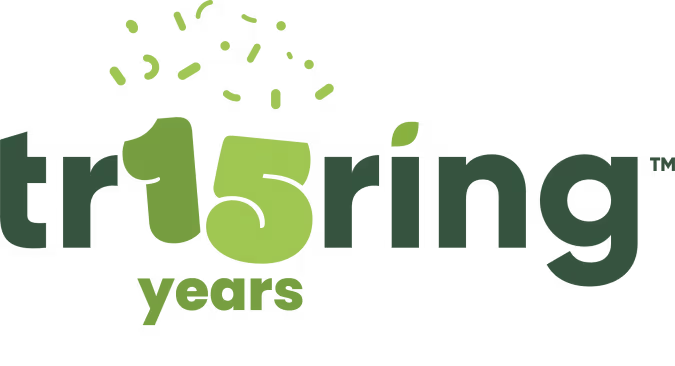
15 Years of Treering: It is our Birthday
Here’s what you can expect in 2024: from January through December, we will celebrate our 15th birthday with goodies for you. You are the reason Treering Yearbooks continues to grow and innovate.
Giveaways Galore in 2024
Since we can’t hand out plastic goodie bags with sticky hands and noisemakers to every member of the Treering community, coffee, gift cards, custom pages, and other freebies will have to do.
Spoiler alert: Treering’s annual design contests are not going anywhere.
“Treering in the Wild”
Last year, at the PTO Today conference in Chicago, IL, an editor said she loved seeing “Treering in the wild,” and it stuck with us. In 2024, we’re leaving our home offices and Google Meets for more IRL conversations and celebrations.
New Ways to Capture and Share Memories
Personalized memories are here to stay. How families and yearbook coordinators collect and share them once again will get a shake-up at our hands.
2024 Growth Opportunities
From new Yearbook Club webinars for yearbook coordinators and advisers to multi-day virtual events and mini-tutorials, we pledge to continue supporting you by answering your questions and simplifying the design-to-print process.
To learn more about how you can be involved in Treering’s 15th birthday celebrations,
- Engage with Treering Yearbooks on Facebook, Instagram, X, formerly known as Twitter, and TikTok
- Read the monthly editor newsletter
- Subscribe to the blog
Staff pictured
Top: Sara C. (Sales), Jordan O. (Community Advocate Team), Ali J. (Sales), Gia W. (Sales), Ed G. (Product Evangelist), Liz T. (Customer Success Manager), Dara A. (Sales), Kate H. (Sales)
Bottom: Dustin A. (Community Advocate Team), Katie P. (Customer Success Manager), Shannon H. (Sales/Social), Sandra V. (Engagement and Onboarding), Louise Kate L. (Community Advocate Team), Aisa A. (Community Advocate Team)
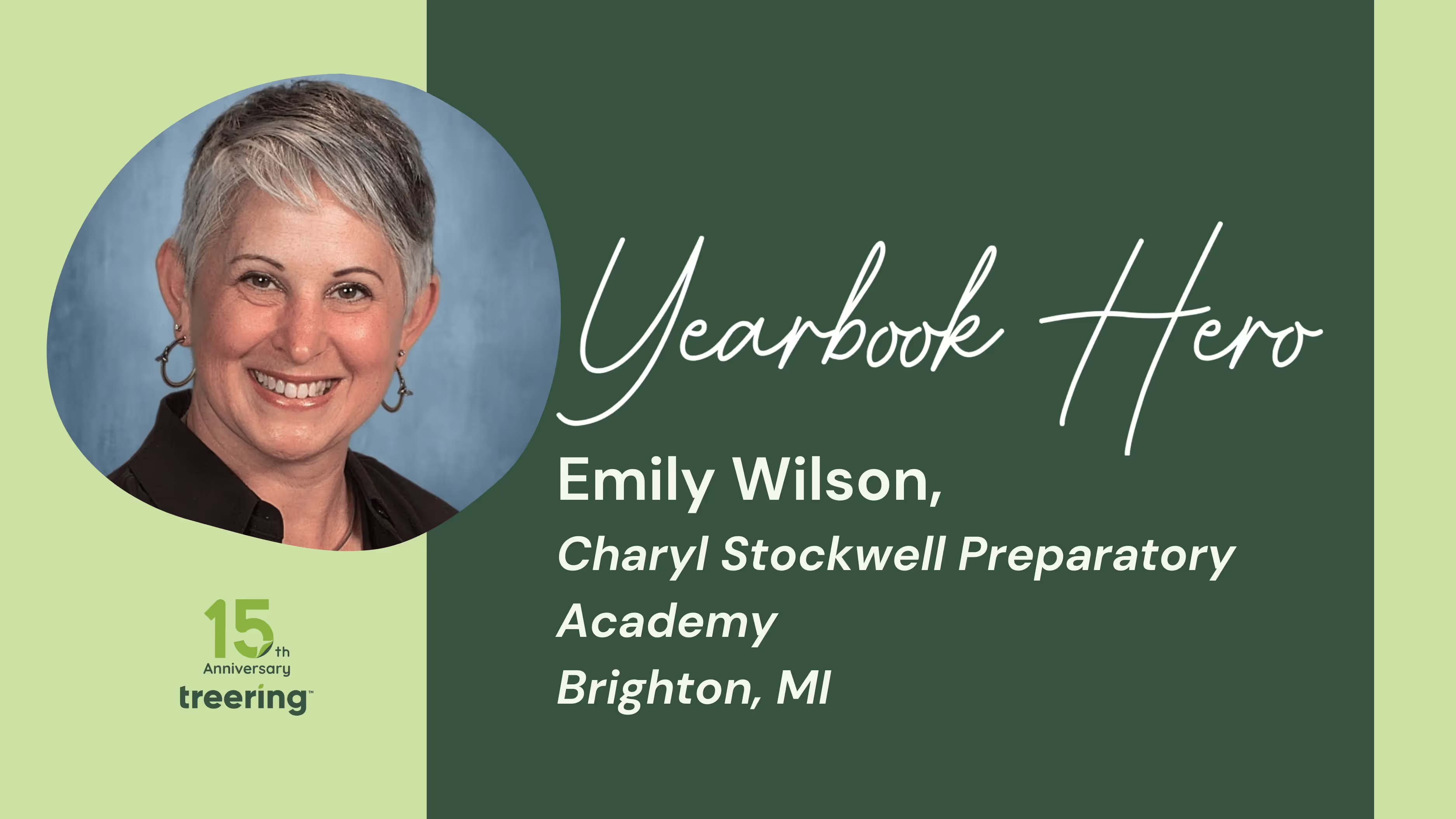
Yearbook Hero Emily Wilson’s lessons learned and achievements earned
Treering Yearbook Heroes is a monthly feature focusing on yearbook tips and tricks.
Uncertainty. That was the word of the year in 2020. Just two weeks before the school year began, Emily Wilson unexpectedly stepped into the role of yearbook advisor.
At the time, Charyl Stockwell Preparatory Academy (CSPA) was one of the few in the area offering both in-person and virtual classes. Like many, they faced challenges: masked students and staff, strict social distancing, limited outside visitors, and restricted volunteer involvement. These constraints forced a complete reevaluation of traditional yearbook creation methods.
To meet these challenges, the school switched to Treering, drawn by its intuitive software, online support, and the ability to crowdsource photography—a feature that became essential with reduced staff and student participation. Now, five years later, the school is producing its fifth yearbook using Treering.
How did you become the Yearbook Adviser?
Before becoming the yearbook advisor, my career focused primarily on teaching English, literature, and creative writing. Journalism and yearbook production were never areas where I expected to excel, but I always admired our previous advisor for the award-winning program she built. Her accolades still hang in our hallway, a constant reminder that there is always room to grow. Over the years, I’ve gained confidence as an advisor, building relationships with our student staff, and producing yearbooks we’re proud of. The experience has been transformative for both me and my students.
How has your involvement with your state’s journalism association impacted your skills and opportunities in the field?
In 2022, I was honored when the Michigan Interscholastic Press Association (MIPA) invited me to serve as a judge for their yearbook competition. It was a valuable opportunity to see what award-winning yearbooks looked like up close and personal, and it gave me insights into how our own yearbook could evolve. To my surprise, we were much closer to hitting the mark than I had anticipated. That experience gave me the courage to submit our book for critique, and we anxiously awaited feedback from MIPA.
After three long months, the results came in: we had earned a Bronze award for our 2024 yearbook, with a commendation for excellence in photography. The recognition was a testament to my students’ hard work and dedication. But what stood out most to me was their reaction. Rather than getting too comfortable with their achievement, students immediately started thinking about ways to improve for next year.

One of my editors-in-chief said, “We were only 47 points away from earning a Silver Medal,” and immediately began brainstorming ways to improve. That mindset—that focus on what we can achieve next—is what makes this journey so rewarding.
Let’s talk about that critique. How did it benefit your team?
One of the most valuable aspects of submitting our yearbook for critique is the detailed feedback we receive, which helps us grow. We are focusing on a unifying concept and improving coverage.
To be more competitive, we need to create more original graphics and artwork for the yearbook rather than relying on pre-made designs. Fortunately, Treering’s platform makes this process straightforward. For instance, last year, one of our International Baccalaureate Art students designed the cover art, which we seamlessly integrated as the background for the cover.
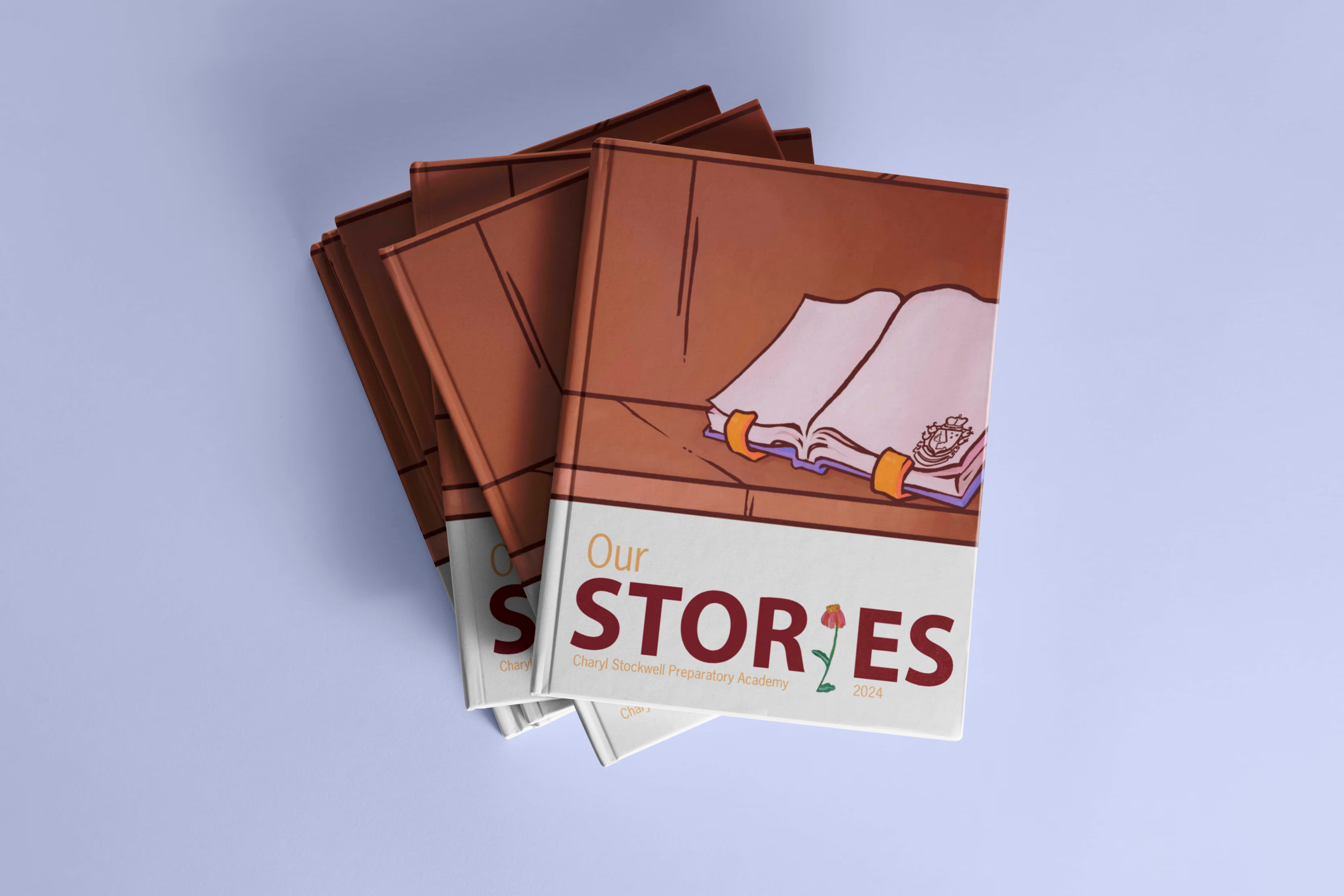
Additionally, we learned that carrying the theme throughout the book is essential—right down to the headlines and titles. Last year’s theme was “Our Stories,” but we could have done more to tie the theme together by using idioms or expressions related to storytelling across different sections of the book.
Design consistency is one of the easiest ways to make a bigger impact. MIPA suggested that we choose one unifying style for the entire book—colors, patterns, and layouts should be consistent throughout. This allows us to maintain a cohesive aesthetic while allowing for flexibility in layout design.
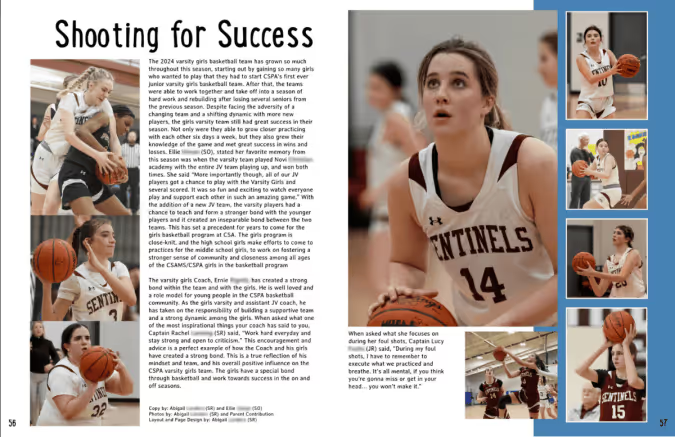
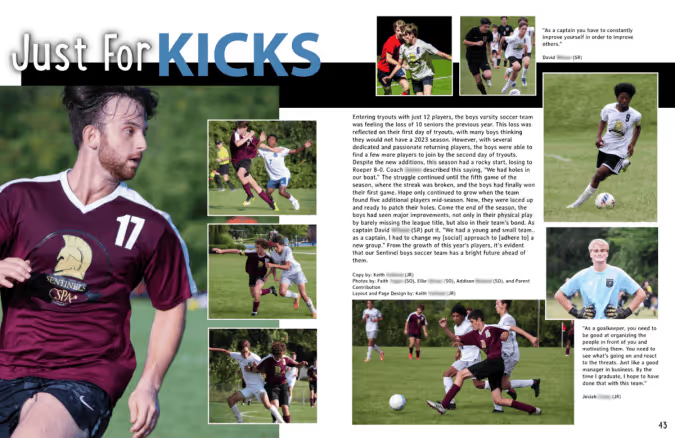
While we did a solid job covering our school’s 11 non-athletic clubs and 17 athletic teams, we need to focus more on individual stories—highlighting specific student achievements and weaving in features that reflect the times, like the cost of living. We’re also working on improving our balance of academic content; as MIPA pointed out, “Not every student is in a club or plays a sport, but every student sits in a desk in class.”
What is your area of strength?
We were thrilled to receive commendations for our photography, an area where we truly excel. Our focus on candid photos and capturing moments of excitement paid off. Moving forward, we’ll continue to refine our photography skills, paying more attention to cropping, editing, and ensuring that photo credits are included on every image.
What will be your focus this year?
Writing is where we have the most room for improvement. Every photo needs a caption, and those captions should follow journalistic writing standards—using active voice, varied sentence structures, and avoiding overly descriptive language like “is running” or “is playing.”
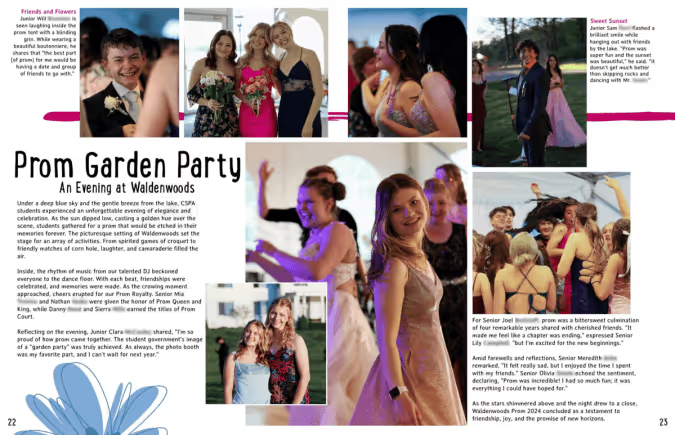
We also need to use secondary headlines to draw readers in and provide additional context. The critique also reminded me that, as an English teacher, I’ve been teaching students to write like English students, not like journalists. This is an area where I plan to invest more time, learning more about journalism standards so we can elevate our writing to meet those expectations.
What is the role of a yearbook adviser at CSPA?
Our yearbook, “The Sentinel,” is a labor of love produced by a small but dedicated team. I advise a staff of four students. We serve a high school with approximately 320 students. Every year, we produce a 150-page yearbook that covers everything from the start of school through prom, delivering it to students during the last week of school.
Additionally, we create a 28-30 page supplemental softcover book for the senior class, which includes coverage of senior-specific events like Senior Sunrise, Senior Awards, and Graduation. This supplement also features graduation speeches and letters from teachers to the graduating class. Design-wise, it complements the theme of the main yearbook. We print the student commencement speech in this supplement.

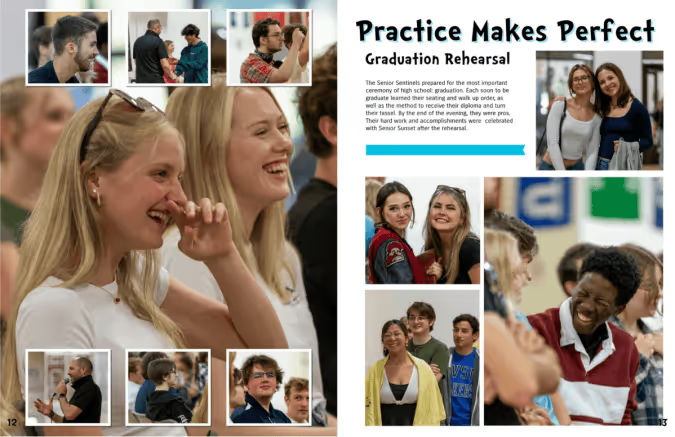
To bring our yearbook to life, we rely on a combination of Treering’s software, Canva, and Adobe Lightroom. Our resources are modest—one laptop, one large monitor, and two Rebel cameras—but we make the most of what we have. Fundraising through Treering has helped us pay for essentials like new camera lenses, a journalism camp for our editors, and lighting equipment for portrait photography. This year, our goal is to raise enough money for a new camera and upgraded lenses to continue improving the quality of our work.
What’s next for “The Sentinel?”
As we look ahead, we’re excited to continue improving. We’re going to hang our Bronze Medal plaque on the wall as a reminder of how far we’ve come, but our eyes are already set on the next challenge. We’ll keep pushing ourselves to tell more meaningful stories, refine our writing, and produce a yearbook that our school can be proud of. Ultimately, it’s not just about winning awards but about creating something our students, staff, and community will cherish for years.
